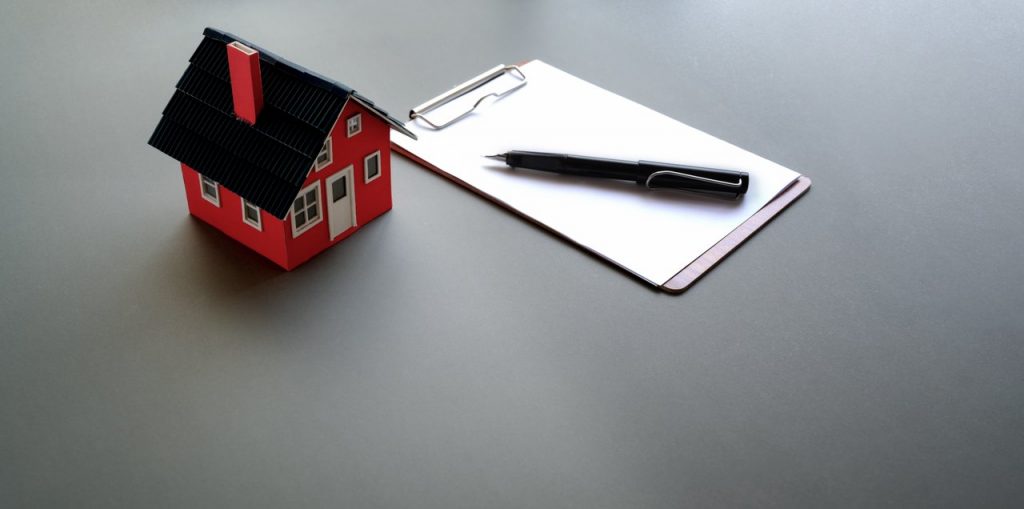
USDA Home Loans Reviews: A Buyer’s Guide
When buying a new home, people usually pay for their home with a mortgage, since this is far easier than paying for an entire house upfront.
But it’s not always easy to secure a mortgage with a decent interest rate, especially if you don’t have particularly good credit.
However, in certain instances, you can be approved for a USDA home loan, which is usually far easier to get and commit to than other types of home loans.
But why, you might ask? I’ll break down all the details about USDA home loans here.
What Is a USDA Home Loan?
A USDA home loan is a mortgage issued and insured by the United States Department of Agriculture. The USDA home loan program is intended to help people and families with low to moderate levels of income buy homes in rural or suburban areas.
Because no down payment is required to get a USDA home loan, it’s a great mortgage option for people who are buying their first home.
The purpose of the USDA home loan is to try and increase economic growth throughout less populated, more rural areas of the United States. That’s not to say that this home loan is only available for people who live way out in the sticks.
In fact, 97% of the United States’ landmass is considered “rural” enough to apply to this loan.
The USDA backs these loans, but they’re not the one who actually provides you with them. In order to actually get a USDA home loan, you’ll have to apply for one from an approved lender.
Because the USDA insures the loan, this means that even if you default on your payments and your home is foreclosed; the loan lender will still be able to recover at least 90% of the original loan amount, if not more.
Because these loans are backed by the government, you can typically get a much lower mortgage rate with a USDA home loan than you would get from pretty much any other mortgage program.
How Do I Know if I’m Eligible for a USDA Home Loan?
You have to meet several eligibility requirements if you want to be approved for a USDA home loan. These are based around your credit score, your income level, where your home will be located, and what you intend to use it for.
Bear in mind that authorized lenders might have their own internal criteria for approving applicants outside of what the USDA specifies. In general, though, these are the standards you have to meet to be approved for a USDA home loan.
The USDA offers a few different types of loans as well, and each one of those has slightly different eligibility criteria as well. For now, we’ll just be talking about the general requirements for securing a USDA home loan.
Let’s take a look at the specifics of each requirement now.
USDA Loan Qualifications
Before you even get into the other factors, there are several basic qualifications that every individual has to meet if they want to be eligible for a USDA loan.
For starters, you must hold American citizenship, or at the very least be a legal permanent resident.
For example, you can apply for a USDA home loan if you are a U.S. non-citizen national (someone born in an American territory outside of the U.S. proper) or a qualified alien (a non-citizen of the U.S. who has been lawfully admitted into the country and is a permanent resident).
Even though this loan is generally intended for lower-income individuals, you still have to prove that you’re capable of a reasonable level of fiscal responsibility before you can be approved.
You need to have a decent credit score, which should ideally not be lower than 640. You’ll also need to prove that you have a reliable source of income, and you’ll need to show that you’re capable of repaying the mortgage on time.
If you’ve demonstrated that you can go for at least a whole year without making any late payments, you’ll be in a pretty good spot in this regard.
The property that you’re getting a loan for also needs to be your primary place of residence. USDA home loans don’t apply to properties like cottages that are used as a secondary residence, and they don’t apply to properties that are being bought primarily as an investment.
Finally, your adjusted annual income can’t be significantly more than the median income for the area you want to live in. The maximum you can make and still be eligible for a USDA home loan is 115% of the median income for any given area.
Obviously, the exact figure depends on how wealthy of an area you’re in and how many family members you have.
Credit Requirements
Like we already mentioned, you’ll have the easiest time getting approved for a USDA home loan if you have a credit score of 640 or higher. A credit score like this demonstrates that you have the capacity and the willingness to actually pay back the loan on time.
If your credit score is 640 or above, the USDA has a computerized underwriting system that will automatically assess the risk level of providing you with a loan. If your credit score is under 640, you can still be eligible for a loan, but you’ll be subject to manual underwriting, which uses stricter criteria to evaluate your risk level.
When evaluating whether you’re a particularly risky applicant or not, your lender will consider things like your credit score, the length of your credit history, your repayment patterns, and in what situations you tend to use your credit the most.
Even if you don’t have any credit score at all, you can still potentially be eligible for a loan. Still, you’ll have to verify your credit from other sources like rent payments, insurance payments, or utility payments.
Income Requirements
When calculating your eligibility based on your income, the USDA considers four different things: your annual household income, your adjusted annual household income, the USDA qualifying income, and your repayment income.
First, however, the USDA looks at whether or not you have a stable income source at all. To verify this, you’ll most likely have to submit at least two years’ worth of income tax returns, and potentially even some recent paystubs.
Annual household income and adjusted annual household income are both pretty easy to figure out. Annual household income is simply the total income of every adult in the household per year. This applies to all adults living on the property, even if they’re not included on the loan themselves.
Adjusted annual household income is your total annual household income minus any qualified deductions. Qualified deductions tend to include things like home mortgage interest, income taxes, and medical expenses.
Your adjusted annual income is the main figure that determines whether or not you meet the income restrictions for a USDA home loan.
USDA qualifying income is basically your proof of stable income. Your income needs to fall within a certain range for you to be eligible for a loan.
On the other hand, repayment income is a measure of your ability to pay back the specific loan you’re applying for. A lender evaluates this by figuring out your debt-to-income ratio (DTI).
The USDA imposes a 41% DTI limit for its loans, meaning you’ll get approved if you spend no more than 41% of your monthly income on repaying debts. It’s possible to get a loan from the USDA if your DTI is greater than 41%, but in such cases, you’ll probably be subject to more stringent lending requirements.
While the exact income limit varies depending on where you live and how many people live in your household, the USDA does have a general annual income limit. For houses with 1-4 residents, this limit is $90,300, and for houses with 5-8 residents, this limit is $119,200.
Location Requirements
As we’ve mentioned, the USDA home loan is intended for people who want to buy or renovate a house in a rural area. The USDA’s definition of “rural” is pretty broad, however, and there are tons of suburban areas throughout the U.S. that qualify as rural enough to count.
The USDA defines rural areas as an open country outside of a built-up urban area. There are also population requirements for each area that determine whether it can be considered rural or not.
It depends on what area it is, but in general, the USDA does not consider an area to be “rural” if the population in that area is greater than 35,000.
However, the vast majority of the continental U.S. is considered to be “rural” by USDA standards. In fact, almost a third of the entire American population lives in what would be considered rural areas.
Property Requirements
You can’t just buy any type of property you want with a USDA home loan. There are some restrictions on what your property can or can’t have, and these restrictions are for the benefit of the buyers and the lenders. The restrictions here ensure that whatever property you buy is safe to live on and meets the proper sanitation requirements.
For example, the property you’re buying must be used as your primary place of residence, like we already mentioned. The property must have access to some kind of road, be it a street, a country road, or a driveway that connects to a road. The property also needs to have utilities like water and electricity, and it needs to have some kind of wastewater disposal.
You’re not allowed to use a USDA home loan to purchase a property that is actively producing income, like a working farm.
However, you can use a USDA home loan to purchase a property that used to produce income but no longer does. For example, a USDA home loan could be used to buy a decommissioned livestock facility or an empty barn.
USDA home loans can also be used to buy modular homes, newly constructed homes, townhouses or condominiums, and foreclosed homes.
What’s the Difference Between a USDA Home Loan and Other Loans?
Being that USDA home loans are targeted towards people with low income, the main difference between USDA home loans and other loan programs is that USDA home loans tend to have the lowest interest rates.
It’s similar to programs like the VA loan program, which is only offered to veterans. These programs can provide lower interest rates to borrowers because the lenders are backed up by the government. The government ensures each loan and sees to it that the lender receives most of their money back in the event that the borrower cannot repay the loan.
Because of this, lenders are far more likely to give out USDA home loans to borrowers who may not be as qualified for other loans.
Another major difference is that you don’t need to provide a down payment if you’re applying for a USDA home loan. Most loans require a minimum down payment of 3% to 5%, but because of government backing, that isn’t necessary in this case.
Most lenders don’t impose restrictions on how high your income is, and in most cases, you’ll be approved for a loan more easily the higher your income is.
However, since USDA home loans are only intended for low-income individuals and families, every USDA home loan comes with an income restriction.
There are also limits on what properties you can buy with a USDA home loan. You can use most other loans to buy whatever type of property you want, but you can only get a USDA home loan for certain types of properties in certain locations.
How USDA Home Loans Work
There are actually three different types of USDA home loans available. While all of these loans work a little differently, they’re all intended to help lower-income individuals get the money they need to either buy or fix up a home.
Let’s go over the three types of USDA home loans and compare them.
Section 502 Direct Loans
This program provides loans to low-income individuals directly from the USDA. You can apply to this loan program if you are currently without a decent place to live and if you are unable to obtain a loan from other sources.
The property that you intend to purchase with this loan must be 2,000 square feet or fewer. In addition, it can’t have an in-ground swimming pool, it can’t be a property that is capable of producing income on its own, and the market value of the property can’t be over the loan limit for whatever area you’re in.
The maximum amount you can borrow will depend on your ability to repay the loan and the loan limit for the area in which you want to live.
Interest rates are fixed, and the rate you get will be based on the current market rates either when the loan is approved or when the loan is closed, depending on which is lower. Depending on your situation, you can potentially get an interest rate as low as 1%.
This program has a 33-year payback period, which can potentially be extended to 38 years if you’re unable to pay back the loan within 33.
Section 502 Guaranteed Loans
This loan program is similar to the Section 502 direct loan, in that both loan programs are there to help people with low income acquire the funds to buy a clean, safe, and adequate house for their needs.
However, this loan does not go directly through the USDA. Rather, you can get this loan by applying for one with a USDA-approved lender.
This loan program is probably the one to go for if you expect to have trouble submitting a down payment. Because the USDA insures 90% of the total value of the loan, this means that there’s far less risk for the lender to offer large loans. You can even get a loan of 100% of the value of the property in some cases.
And because the USDA insures the loan, there’s no obligation for you to put any money down if you aren’t able to.
Interest rates for this loan program vary depending on which lender you decide to go with, so it’s worth it to shop around and look for the best deal possible. Section 502 guaranteed loans are only available at a fixed rate and with one payback period of 30 years.
Section 504 Home Repair Loans
This is another loan program that specifically targets low-income individuals and families. However, the big difference between this loan and others is that the Section 504 loan is only intended to help repair or renovate existing homes instead of buying properties.
If you’re 62 years of age or older, you also have the option to apply for a grant if you want to remove any safety hazards from your home but are unable to afford a standard repair loan.
In order to qualify for this loan, you have to own and occupy the house you want to fix. You must also be unable to obtain credit from other places, and your family’s income must be less than 50% of what the median income for your area is.
The largest loan you can receive is $20,000, and the largest grant you can receive is $7,500. You can potentially combine a loan and a grant to receive up to $27,500.
The payback period for Section 504 loans is 20 years, and the interest rate is fixed at 1%. Grants don’t have to be repaid, with one exception; if you sell your property within 3 years of receiving the grant, you must pay the grant back.
Benefits of USDA Home Loans
Here, we’ll highlight some of the main benefits you can get with a USDA home loan.
No Down Payments Required
If you can’t afford a standard loan or have a down payment, then a USDA home loan is probably right for you. No down payment is required for any type of USDA home loan.
You Don’t Need Perfect Credit to Get One
You don’t need a minimum credit score to get a USDA loan , although it does help. In general, it’s a lot easier to get a USDA home loan if you have bad or nonexistent credit. Although some USDA-authorized lenders have their own credit score standards in place.
Even if you have a history of bad credit, you might still be eligible for a USDA home loan.
The USDA uses automated underwriting tools to assess whether or not you can be approved for a loan. Even if the automated underwriter denies your application, you have the option of having your application assessed by an actual human underwriter.
In this case, the underwriter will consider other things that affect your risk level, like whether you always pay rent or utilities on time or if you have a low DTI.
No Set Loan Limits
In general, the USDA decides the limit of your loan based on your DTI and how much income your household makes. This means that the limit can be flexible, depending on your circumstances.
In the best-case scenario, you can be approved for a loan for as much as $400,000.
Excellent Rates
In general, you can expect much lower interest rates for USDA home loans than you would from similar fixed-rate mortgages. Because the USDA insures so many, the lender can afford to give you a lower rate despite risk defaulting on your payments.
Drawbacks of USDA Home Loans
While USDA home loans are pretty great in many ways, they’re not entirely perfect. Here are some of the downsides to USDA home loans that you should consider before applying for one.
Many Restrictions on Applicable Properties
The main downside of the USDA home loan is that many properties don’t meet the requirements that would make them eligible for such a loan.
Obviously, properties have to be located in a rural area, for one. And for two, the property cannot be used for commercial purposes.
Houses used as investment properties or as temporary vacation homes are also ineligible for one of these loans; the house in question must be your main place of residence. Properties with in-ground swimming pools are ineligible as well.
Income Restrictions
If you make too little, then you won’t qualify for a USDA home loan. However, if you make too much money, then you won’t be eligible either. The limits for direct loans are quite a bit lower than the limits for guaranteed loans as well. Basically, you can only qualify for a USDA home loan if your income is in that particular sweet spot.
Limited Number of Approved Lenders
Unfortunately, you can’t just get a USDA home loan from any lender. The USDA has a list of authorized lenders, and only those lenders are permitted to offer USDA home loans.
Should You Go with a USDA Home Loan?
The USDA home loan is only really suitable for one specific type of buyer. That would be someone who wants to purchase a home in a rural area, but doesn’t have a down payment or the credit score to get a loan from somewhere else.
If this applies to you, then you should become aware of the borrowing restrictions and extra fees associated with a USDA home loan. But if you know you get approved, then a USDA home loan is one of the best loan programs you can choose.








